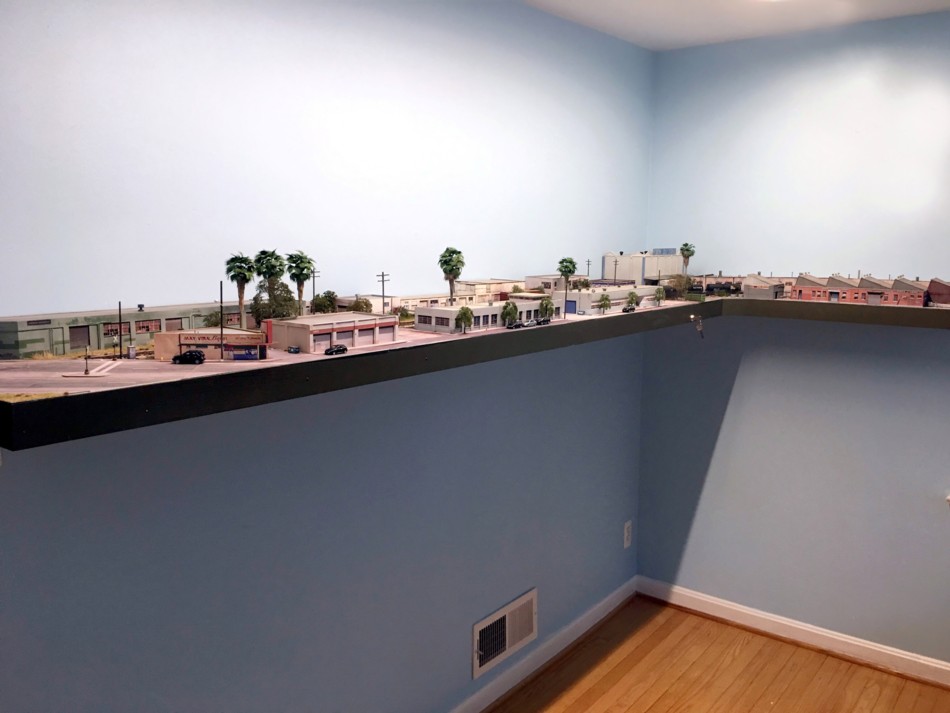
As you walk through your living room, chances are that somewhere on the wall hangs something you enjoy looking at. It could be a painting, poster, sculpture, or photograph. Whatever it is, you liked it when you bought it, you liked it a year after you bought it, and to this day it gives you pleasure to look at it. That’s what art is all about.
A number of years ago somebody wrote that model railroads weren’t meant to be static. By their very nature, their purpose extended beyond serving as a diorama. Although I agree to an extent, and I understood where the writer was coming from, I’m beginning to think that may be oversimplifying things, at least in certain situations.
It sort of snuck on me but I began to realize how much I enjoy looking at my LAJ layout…even when it’s not running. The same held for East Rail. Although it was built to operate, and does so, I derive pleasure from simply taking it in whether trains or running or not. It gives me the same visual sensation as a favorite painting. Maybe we are being a little myopic in pigeon-holing our layouts solely as beautifully crafted, interactive machines.
The nature of art is such that everybody’s experience will vary but a few things factor in if you’re going to build something primarily as wall art.
- The layout needs to be relatively small, I’d say a 10 foot by 10 foot “L” at most. As layouts get larger, no matter how great they’re built, it becomes too much to take in as you would a painting or sculpture. As I mentioned, East Rail and the LAJ project “feel” like wall art. My Monon layout and The Downtown Spur are too expansive to serve that end.
- Presentation matters. Ragged MDF fascia’s and dangling wires may be something you could live with on an operations oriented layout in your basement but that won’t fly in a living room or den, especially if you share the space with others. It’s not hard, but the effort has to be made to keep things clean and presentable.
- Visual composition matters more. On a prototype layout, accuracy, modeling what was there, what serves on operational purpose, is more important than visual cohesiveness. For an art oriented layout, looks and composition are more important than accuracy. To an extent, you can have your cake and eat it too, as long as you are careful in picking your subject.
I did a recent Google search of “what constitutes great art”. The top results were primarily from those in the art world and were surprisingly non-judgemental. The bottom line is if looking at a piece of art brings you enjoyment that’s all that matters. That’s why we hang our children’s finger paints on our wall. If it sparks happiness, humor, or another positive emotion, then its art and worth appreciating in our homes. Some of the google results did go a step further though. Most said that if you start spending a lot more times in museums and studying the work of masters you do start noticing the difference between the skilled amateur and somebody like Vermeer or Hopper. That’s a point that translates to what we do. If you step outside of model railroading and really study painting of the great artists of all time you will start to pick up on nuances that can be applied to creating an effective model railroad scene.